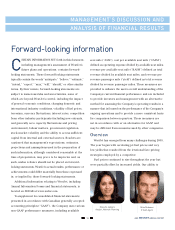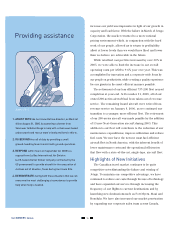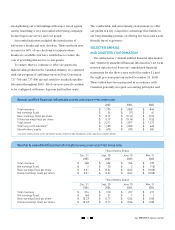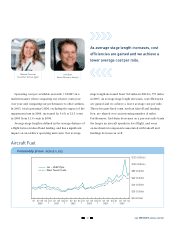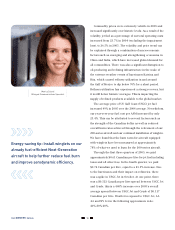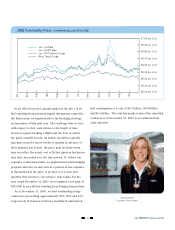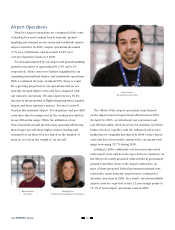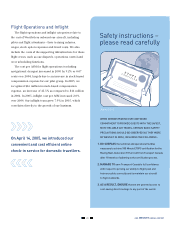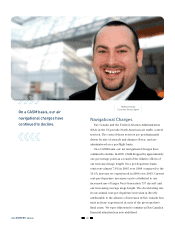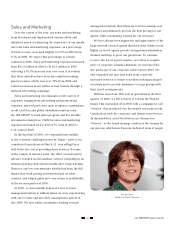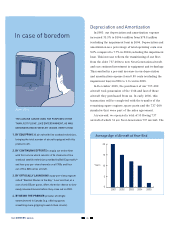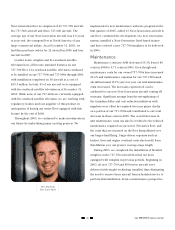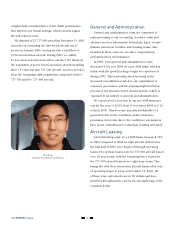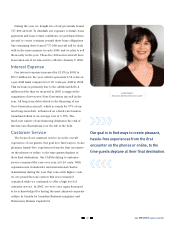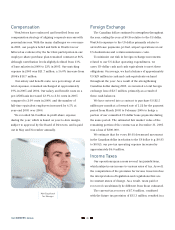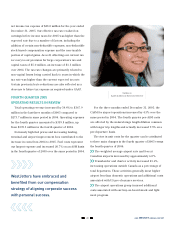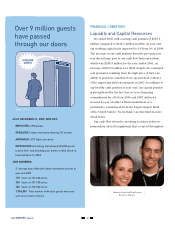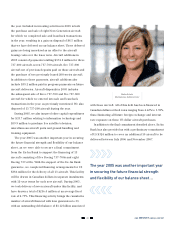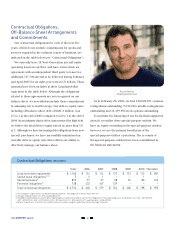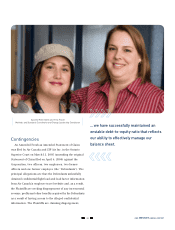Westjet 2005 Annual Report Download - page 25
Download and view the complete annual report
Please find page 25 of the 2005 Westjet annual report below. You can navigate through the pages in the report by either clicking on the pages listed below, or by using the keyword search tool below to find specific information within the annual report.
2005 WESTJET ANNUAL REPORT
23
Sales and Marketing
Over the course of the year, our sales and marketing
team developed and implemented various offers and
initiatives aimed at enhancing the experience of our guests.
Our total sales and marketing expenses, as a percentage
of total revenue, increased slightly to 8.9% in 2005 from
8.1% in 2004. We expect this percentage to remain
constant in 2006. Sales and marketing expenses increased
from $85.2 million in 2004 to $124.2 million in 2005,
reflecting a 45.8% increase year over year. It is evident
that these initiatives have been successful in boosting
guest revenues, which rose over 29% from 2004 and
raised awareness of our airline across Canada through a
national advertising campaign.
Sales and marketing encompasses a wide variety of
expenses, ranging from advertising and promotional
expenses; sales-related costs, such as agency commissions,
credit card fees and global distribution system costs;
the AIR MILES®reward miles program and live satellite
television licensing fees. CASM for sales and marketing
expenses increased 22.1% from 0.95 cents in 2004 to
1.16 cents in 2005.
In the first half of 2005, we responded successfully
to the economic challenges posed by Jetsgo – prior to its
cessation of operations on March 11, was selling fares
well below the cost of providing those services. Because
of the volume of advance sales, the effect of seats sold in
advance resulted in all Canadian carriers competing in an
irrational pricing environment months after Jetsgo’s demise.
However, our low-cost structure shielded us from the full
impact this weak pricing environment had on other
carriers, and helped guide us to our return to profitability
in the second quarter of 2005.
In 2005, we successfully deployed a new revenue
management system to address issues we were experiencing
with our revenue and inventory management system in
late 2004. We now utilize an industry-leading revenue
management system that allows us to better manage seat
inventory and ultimately provide the best pricing for our
guests, while maximizing returns for our investors.
We have always been supportive and appreciative of the
large network of travel agents that book their clients on our
flights, as travel agents provide an important distribution
channel and help to grow our guest base. To continue
to serve the travel agency market, as well as to acquire
more of corporate Canada’s business, we increased the
size and scope of our corporate sales team in 2005. We
also expanded our specialty sales team to provide
increased services to leisure travellers seeking packaged
vacations and to provide assistance to large groups with
their travel arrangements.
With the end of our 10th year of operations in the first
quarter of 2006, we felt it timely to refresh the WestJet
brand. This was kicked off in 2005 with a campaign we call
“Owners” that produced very favourable reactions across
Canada from both the corporate and leisure travel sector.
As shareholders, most WestJetters are themselves
“Owners,” so the brand message reinforces the reasons for
our success, which stem from our dedicated team of people.
Jan Kerstiens
Workforce Payroll Director


